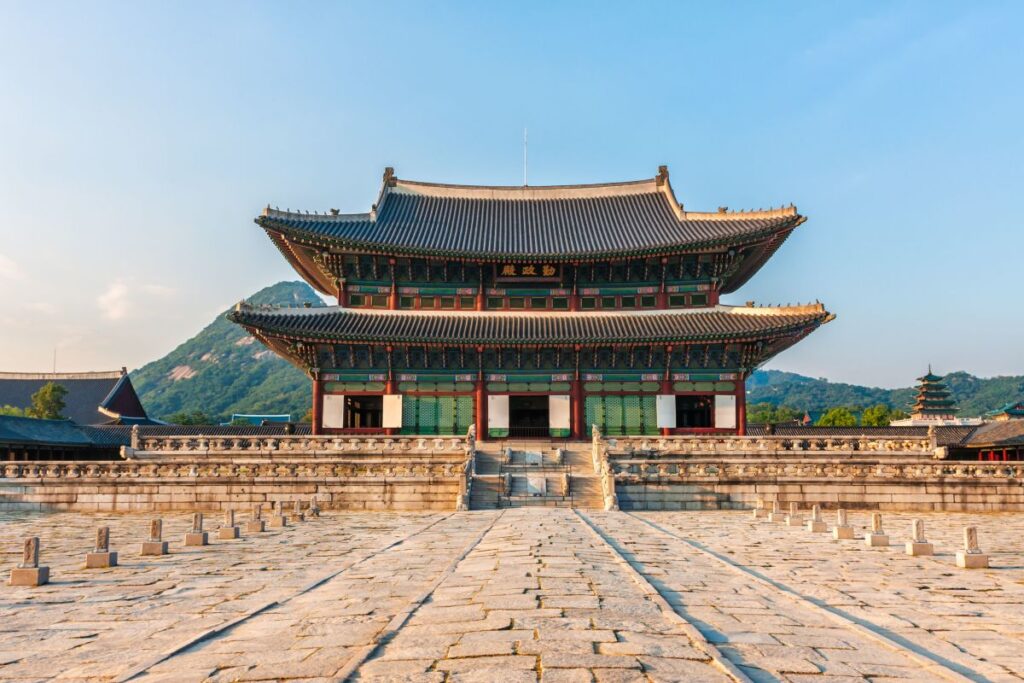Changdeokgung is a set of palaces within a large park in Seoul, South Korea. It is one of the great palaces built by the Chosŏn Dynasty and, because of its location to the east.
- It was declared a World Heritage Site by Unesco in 1997.

Home of korean kings
The essence of Korean culture that we know today, from its language to its customs, art, science, architecture, etc. it was established and cemented on the Korean peninsula from the late 14th century. By then, the Goryeo dynasty was paling after 500 years of rule. After defeating them, the Joseon came to power. They did so for a long time, until they became the longest-lived Confucian dynasty: until 1897 they reigned and spread their culture throughout Korea. They did it from Hanseong, present-day Seoul, which they set as their capital. The Joseons designed a whole urban plan for it. Among other places, the Joseon used the Changdeokgung Palace Complex as their main residence. It was neither the first nor the last palace. Changdeokgung is part of what is known as the five great palaces,all located in the north of present-day Seoul.
Emperor T’aejong
At the beginning of [[15th century ○ 3], Emperor T’aejong ordered the construction of a new palace on a site for which the omens had been auspicious. An office was created in charge of constructing the official and residential buildings of the palatial complex, which were erected in a garden adapted with great wisdom to the irregular topography of the chosen 58-hectare site. The result was the creation of an exceptional exemplar of the palatine design and architecture of the Far East, which blends harmoniously into the surrounding landscape.
First Gyeongbokgung Palaces
The first of these palaces was Gyeongbokgung , where the first king Taejo Yi Seong gye led the court. Taejo chose his eighth son as his heir and the fifth, who had been actively involved in expelling the Goryeo, did not take it very well. Yi Bang-won murdered all the troublesome relatives and, after proclaiming himself King Taejong, decided to build a new palace that was not stained with blood. Thus began the construction of Changdeokgung, the prosperous palace of virtue, completed in 1512. Taejong was the monarch who set the tone for the Joseon: exacerbated absolutism and a staunch defense of Korean culture, which was revived after various attempts to invasion by Chinese and Japanese neighbors in the 16th and 17th centuries. These attacks plunged Korea into near total isolation and autarky.
Furthermore, the attacks were a disgrace for Changdeokgung. Neither were some periods of internal rebellions particularly good for it, such as 1623. Built almost entirely of wood, the complex has suffered numerous fires and has been rehabilitated over the centuries, although always respecting the original design. One of the biggest fires was used by King Seonjo to expand the original enclosure and build the secret garden or Huwon, one of the greatest attractions of Changdeokgung. It is a garden reserved once for the high court, consisting of more than a hundred species of trees, a lake with lotus flowers, the stream inscribed in the rock called Ongnyucheon and different pavilions. All of this is at the rear of the complex and blends in with the surroundings of Ungbong Peak and Mount Baegaksan.This integration into nature is a distinctive feature of Changdeokgung, distinguishing it from the more Orthodox Gyeongbokgung. In Changdeokgung the design seems much more free and spontaneous, although in reality it faithfully follows the precepts of pungsu , Korean feng shui .
Donhwamun
It is the main door that gives access to the complex. As soon as you enter, the Injeongjeon reception hall stands out, where the throne is located. From here the most administrative buildings are distributed, such as the beautiful and blue Seonjeongjeon, the king’s offices, and the more residential court buildings, both for the king and the queen. Changdeokgung was the royal seat for more than 250 years, until in 1868 the seat returned to Gyeongbokgung. The Joseons were already feeling international pressure for their blatant isolationism. They were relieved by the great Korean empire, which lasted only 13 years, when it suffered the Japanese invasion of 1910. This was the worst moment for the palace: only 30% survived. They are the thirteen buildings that we can see now. After becoming independent,the palace has been lavishly restored as a symbol of the glorious Korean past.
Seoul is today a huge city of twelve million people. With a center devoted to economic progress, almost all of its past can be found in the Jongno-gu district to the north, well connected by subway. A multiple ticket can be purchased to view the five palaces built by the Joseon. In Changdeokgung, the visit can be completed in about 90 minutes and can be guided in English, although there are not many shifts each day. The best time is spring or autumn, to avoid the copious summer rains and see the garden at its best.
